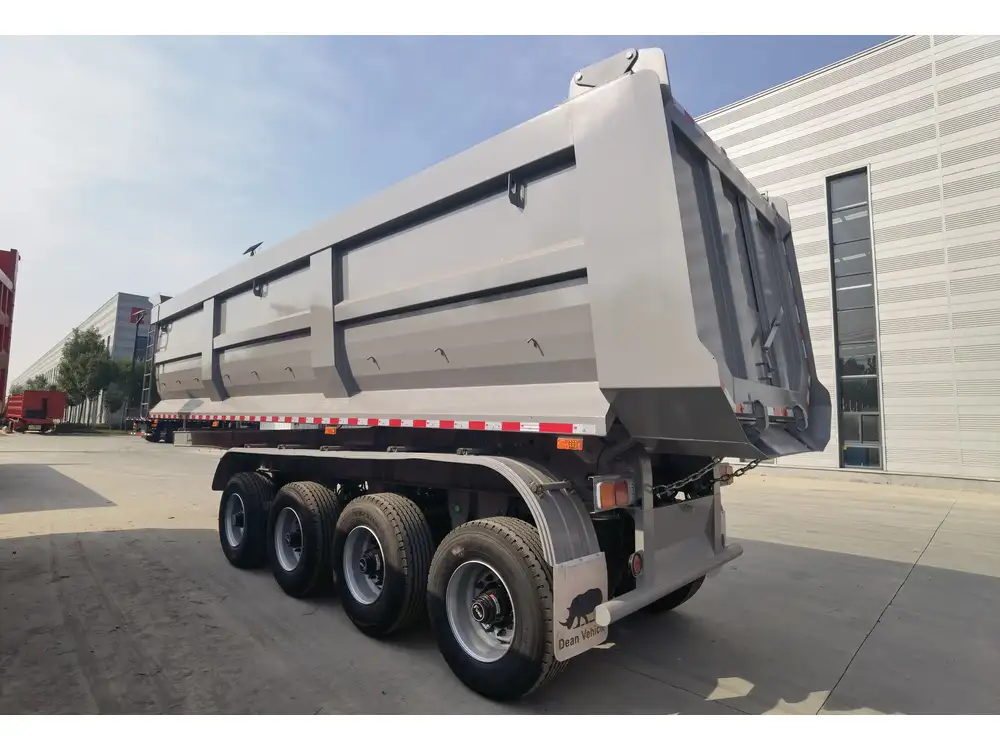Understanding the Basics: Semi-Trailers and Their Components
Driving a semi-trailer without a trailer door might seem trivial at first glance, but as with many regulations in the trucking industry, the nuances hold significant importance. Semi-trailers are not just specialized trucks; they represent a unique blend of engineering, legal stipulations, and roadway safety protocols. The intricate design of semi-trailers involves various components that serve specific purposes; one such integral component is the trailer door.
The Structure of Semi-Trailers
| Component | Function |
|---|---|
| Chassis | The main structure provides strength and support. |
| Axles | Allow the trailer to pivot and navigate turns effectively. |
| Tires | Provide traction and support for the load carried. |
| Floor | Designed to hold heavy loads while maintaining structural integrity. |
| Trailer Door | Provides secure access to the cargo area and ensures safety. |
Understanding these components and their functions sets the stage for comprehending the legal ramifications of operating a semi-trailer, particularly concerning its door.

Legal Considerations of Trailer Doors
Driving without a properly functioning trailer door can lead to a myriad of legal challenges and safety concerns. Regulations vary by state, but an overarching theme remains: safety first. Federal and state laws enforce strict guidelines to ensure that all commercial vehicles, including semi-trailers, meet specific standards.
Key Regulations to Consider
FMCSA Guidelines: The Federal Motor Carrier Safety Administration (FMCSA) states that all commercial vehicles must be maintained in a manner that ensures safety on public roadways. A missing or non-functional trailer door can be deemed a violation of these standards.
State Laws: Many states have specific regulations that can define how cargo must be secured within a trailer. For instance, if a trailer door is absent, it could be difficult to demonstrate that the cargo is adequately secured, leading to potential citations.
Insurance Implications: In many instances, operating a trailer that does not meet regulatory requirements can affect insurance claims. Insurers may deny coverage if a claim arises while the vehicle is out of compliance.
Safety Standards
The primary purpose of a trailer door goes beyond functionality; it serves critical safety aspects:
- Cargo Security: An operational trailer door is necessary for securing goods during transit, reducing the risk of loss or damage.
- Roadway Safety: Open or unsecured cargo can lead to catastrophic incidents, including debris on the roadway, which poses a hazard to other motorists.

Risks of Operating Without a Trailer Door
Increased Liability
Operating without a trailer door can increase liability in the event of an accident. Consider the following scenarios to understand how critical a trailer’s integrity is to a truck operator’s legal standing:
- Cargo Damage: If goods fall from a semi-trailer due to a failing door or a missing door entirely, the operator may face lawsuits from cargo owners for damages incurred.
- Roadway Incidents: Accidents caused by unsecured cargo could lead to vehicular damage or injury to other drivers, resulting in severe legal repercussions.
Compliance Checks
Routine compliance checks with law enforcement can lead to inspections, and any discovered deficiencies—such as the absence of a trailer door—could result in:
- Fines and Penalties: A fine may be issued for failure to comply with safety regulations.
- Inoperable Vehicle Designation: Law enforcement may deem the semi-trailer inoperable until the issues are resolved.

Mitigating Risks: Best Practices for Trailer Maintenance
Regular Inspections
To ensure compliance and safety, operators should perform regular inspections, checking all aspects of the trailer, particularly the doors. Consider implementing the following best practices:
Scheduled Maintenance: Create a maintenance schedule for inspections, ensuring all components, including doors, are functioning correctly.
Visual Inspections Before Trips: Conduct visual checks before departing on trips. Ensure the doors close securely and do not have visible signs of wear or damage.
Training: Ensure that drivers are trained to identify issues with the trailer’s components, including the doors.
Register Issues Promptly
If any issues concerning the trailer door arise, such as poor sealing or a weakened hinge, addressing these problems promptly can mitigate further potential risks.

Conclusion: Is It Illegal to Drive a Semi Without a Trailer Door?
Driving a semi without a trailer door is not just a question of legality; it encapsulates matters of safety, compliance, and liability. Operators must ensure their trailers are equipped with functional doors to adhere to regulatory standards and minimize risks associated with cargo transport. Understanding laws, developing best practices, and fostering a culture of safety contribute significantly to effective semi-trailer operations.
Moving Forward: What Should Operators Keep in Mind?
In summary, if you are involved in the trucking industry or operate a semi-trailer, always prioritize:
Compliance with Regulations: Stay updated on both federal and state regulations regarding semi-trailer safety.
Maintenance: Regular maintenance checks and repairs should be non-negotiable to ensure safety and legality.
Informed Decisions: Always be ready to consult a legal or industry expert when uncertainties arise regarding operational compliance.
Engaging in these practices not only reduces the risks associated with driving without a trailer door but also enhances the overall safety and professionalism of your trucking operations.



